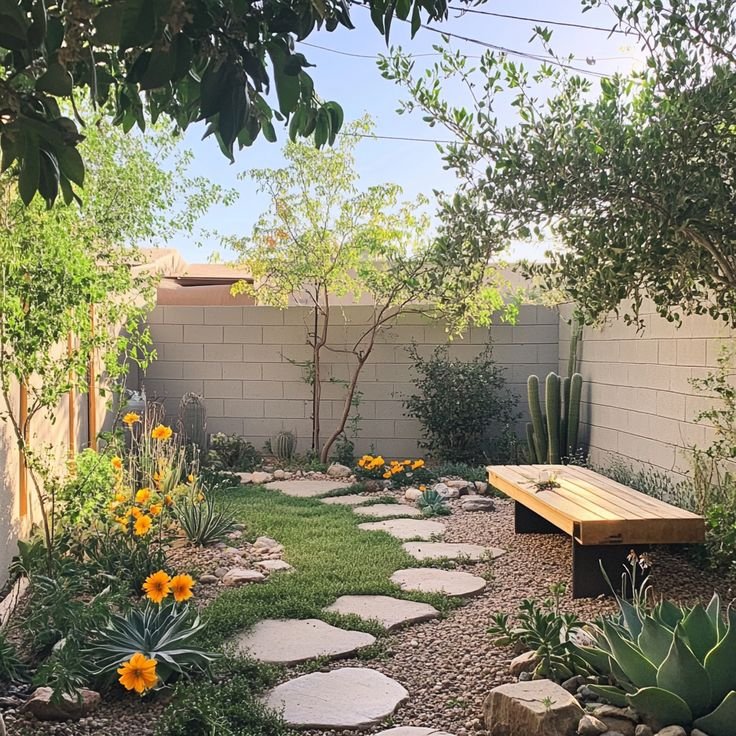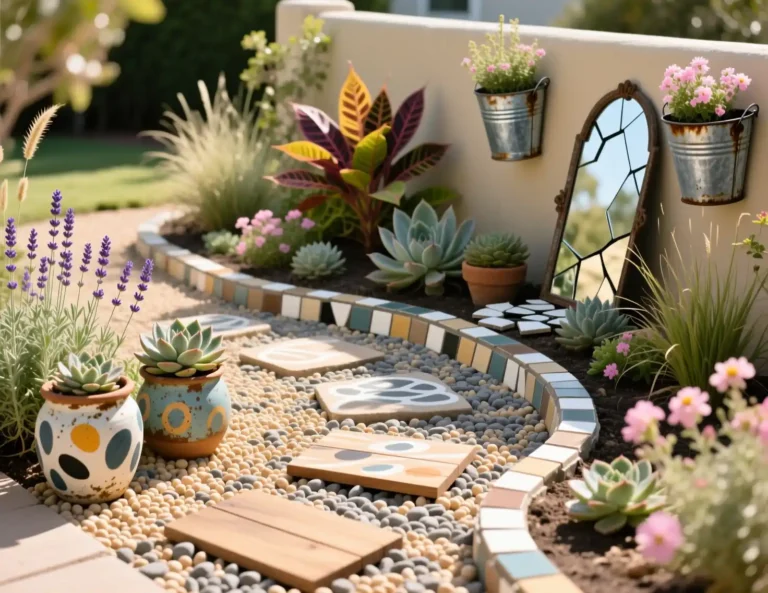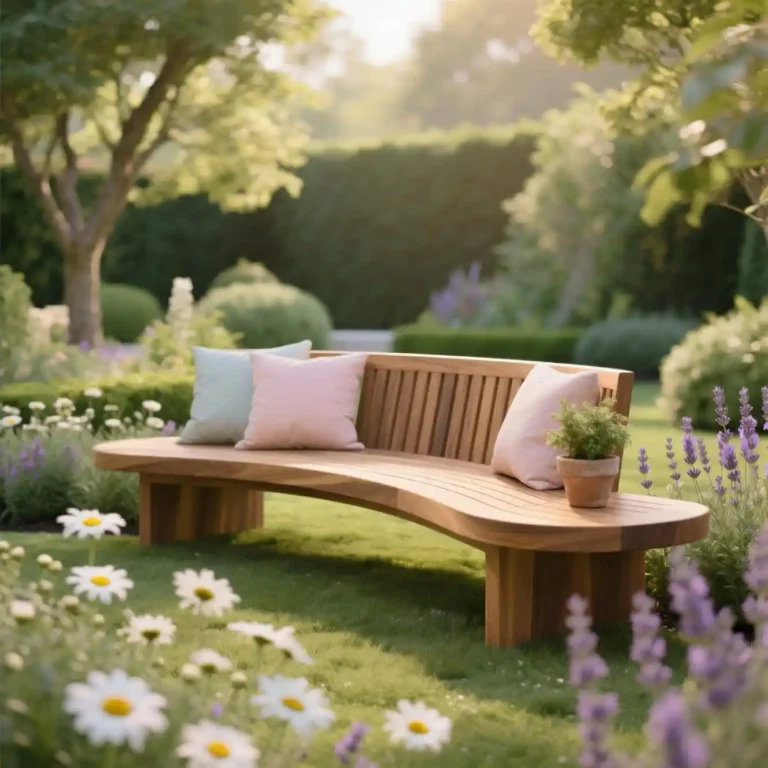25 Small Cottage Garden Ideas That Bring Charm to Tight Spaces

Let’s be real—most of us don’t have rolling English acres to work with. But a tiny yard, narrow side patch, or even a modest patio shouldn’t stop you from having a cottage garden full of color, texture, and old-fashioned charm. These gardens aren’t about size; they’re about layers, personality, and a little controlled chaos that feels perfectly at home.
True cottage style thrives in small spaces. It leans into overflowing planters, winding paths, and mismatched treasures that look like they’ve been collected over decades—not bought in one shopping trip. With smart planning, even a 10×10-foot corner can feel like a secret garden retreat. Below are 25 small cottage garden ideas that prove you don’t need land—just heart.
Why Cottage Gardens Work in Small Yards
- Dense Planting Creates Instant Fullness: Cottage gardens pack plants close together, which hides bare soil and gives a lush look fast.
- Vertical Space Is Fair Game: Trellises, wall pockets, and climbing roses make every inch count.
- Whimsy Over Perfection: Crooked paths, chipped pots, and volunteer seedlings are part of the charm—not flaws.
- Year-Round Interest Comes from Layers: Mix perennials, annuals, herbs, and shrubs so something’s always blooming or changing.
25 Small Cottage Garden Ideas
Climbing Roses on an Archway
Train a classic climbing rose—like ‘New Dawn’ or ‘Zephirine Drouhin’—up a simple cedar or iron arch at your garden entrance. The blooms create a fragrant, romantic gateway that feels straight out of a storybook, even in a space no wider than a doorway. Choose disease-resistant varieties to keep maintenance light and blooms abundant through summer and early fall.
Anchor the arch securely in the ground with post anchors or concrete footings so it won’t sway in wind. As the rose grows, loosely tie young canes to the structure with soft twine. Even in a 4-foot-wide entry, this single feature adds height, scent, and undeniable cottage drama.
Picket Fence with Spilling Flowers
Install a short white picket fence—just 3 to 4 feet tall—and plant low-growing annuals or perennials like alyssum, lobelia, or creeping thyme right against its base. The flowers will cascade softly over the bottom rail, blurring the hard line between structure and soil. This trick makes the fence feel like it’s been there for years, gently embraced by the garden.
Use cedar or pressure-treated wood and paint with a matte exterior white. Keep the fence only one board thick to save space while still defining the edge of your plot. Refresh the paint every couple of years and let the plants do the rest of the softening.
Repurposed Container Plantings
Fill old teapots, galvanized buckets, enamel pitchers, or wooden crates with colorful, spill-over blooms like trailing petunias, lobelia, or sweet potato vine. The key is mismatch—not uniformity. A chipped creamer next to a rusted watering can feels collected, not staged, which is the heart of cottage style.
Drill drainage holes if needed and use lightweight potting mix to avoid cracking fragile containers. Group them in odd numbers on steps, window ledges, or tucked into corners. Even three well-placed pots can transform a blank patio into a lived-in garden nook.
Curved Gravel Path
Ditch the straight line and lay a narrow, gently curving path of pea gravel or crushed oyster shell that meanders through your garden. The bend tricks the eye into thinking the space is larger, and the soft crunch underfoot adds sensory charm. Keep it just 18 to 24 inches wide so it doesn’t eat up precious planting room.
Edge the path with bricks laid on their side, weathered stones, or low-growing herbs like chamomile or thyme. Rake it monthly to keep weeds down and the surface tidy. This simple curve becomes the spine of your garden—guiding visitors through your little world.
Wisteria Over a Back Door
Grow wisteria on a sturdy trellis beside or above your back door. In spring, the hanging purple or white blooms turn an ordinary exit into a fragrant, dreamy portal that feels like a scene from a novel. Choose American wisteria (Wisteria frutescens) for a less aggressive, more garden-friendly option.
Make sure your support is bolted into framing—not just siding—as mature wisteria gets heavy. Prune twice a year: in summer to control growth and in winter to shape. Even a small entry becomes a moment of magic with this classic vine.
Herb Spiral in a Corner
Build a compact herb spiral using stacked stones or reclaimed bricks in a sunny corner. Plant rosemary and thyme at the top (where it’s dry), parsley and chives in the middle, and mint or lemon balm at the base (where moisture collects). The spiral gives you multiple microclimates in under 4 square feet.
Fill with a mix of garden soil and compost for good drainage. Snip herbs daily for cooking—this functional feature keeps your kitchen stocked and your garden smelling fresh. It’s part sculpture, part pantry.
Vintage Garden Bench
Tuck a weathered wooden or cast-iron bench under a tree, against a wall, or at the end of your path—even if you rarely sit there. A seat implies invitation, making the garden feel lived-in and personal. Look for secondhand finds with patina, not perfection.
Leave it to gray naturally or give it a coat of faded white paint for extra cottage appeal. Drape a faded cushion or drape a trailing ivy basket nearby to soften its edges. It’s not just furniture—it’s a moment of pause.
Mixed Perennial Borders
Plant tight clusters of old-fashioned perennials: foxgloves, delphiniums, hollyhocks, peonies, and daisies. Let them lean into each other for that “just-blooming” look—no rigid spacing, no military rows. The goal is abundance, not order.
Stagger bloom times so something’s always in flower from April to October. Deadhead spent blooms to encourage more, but never prune to neatness. A little flop, a few volunteer seedlings—that’s the soul of cottage style.
Bird Bath as Focal Point
Place a simple stone or concrete birdbath in the center of your small space. It draws the eye, adds height, and brings birds that animate the garden with movement and song. Choose a classic pedestal style with a shallow basin—1 to 2 inches deep is ideal.
Keep the water fresh by changing it weekly and scrubbing with vinegar to prevent algae. Surround it with low plants like sedum, dianthus, or creeping phlox so it doesn’t disappear into the greenery. It’s a quiet centerpiece that works year-round.
Climbing Clematis on Trellis
Train clematis up a freestanding or wall-mounted trellis for big, showy flowers in shades of purple, pink, or white. It pairs beautifully with roses or hydrangeas and blooms for weeks with minimal fuss. Choose Group 2 or 3 varieties for easier pruning.
Plant the crown 2–3 inches below soil level to protect from clematis wilt. Use garden netting or soft twine to help the tendrils grip the support. In a tiny yard, this vertical burst of color feels lavish without taking floor space.
Picket Edging for Flower Beds
Outline planting beds with mini pickets—just 12 to 18 inches tall—to add structure without blocking views. Paint them white, sage green, or leave natural for a rustic touch. This small detail keeps the joyful chaos of a cottage garden from looking messy.
Space evenly and sink 4–6 inches into the ground for stability. Use them to separate lawn from bed, or to define a herb patch near your back step. It’s a humble boundary that says, “This is meant to be.”
Hanging Basket Trio
Suspend three matching or coordinating baskets from a pergola, eave, or shepherd’s hook. Fill with trailing lobelia, ivy, million bells, or fuchsias for nonstop color overhead. The height draws the eye up, making your garden feel taller and fuller.
Water daily in summer—baskets dry out fast. Use slow-release fertilizer in the potting mix to keep blooms coming. Even on a narrow patio, this overhead layer adds dimension and seasonal cheer.
Rustic Garden Arbour Seating
Build or buy a small arbour with a bench inside—just big enough for one or two people. Train sweet peas, honeysuckle, or clematis over the top for a private nook wrapped in bloom and scent. Place it at the far end of your yard to create a destination.
Even in a 6×6-foot space, it feels like a hidden escape. Use cedar or reclaimed wood and leave it unfinished to weather naturally. It’s not about entertaining—it’s about having a place to sit with your morning tea.
Wildflower Corner Patch
Let a small section go wild with native annuals like poppies, cornflowers, cosmos, and bachelor’s buttons. Scatter seed in fall or early spring and let them self-sow year after year. The result is a fluttering, colorful patch that changes with the seasons and feeds pollinators.
Mow or trim once a year in late winter to reset the patch. Don’t fertilize—wildflowers thrive in poor soil. This low-effort zone adds movement, spontaneity, and true cottage-style imperfection.
Window Box Overflow
Install deep window boxes filled with trailing nasturtiums, ivy, dwarf snapdragons, and lobelia. Let them spill over the front for a lush frame around your view. Use them on back windows, porch rails, or even shed windows to soften hard lines.
Use rot-resistant wood or PVC boxes with drainage. Line with coconut coir to retain moisture and water every other day in summer heat. A single overflowing box can make a blank wall feel like part of the garden.
Stone Path with Creeping Thyme
Set irregular flagstones or pavers with wide gaps and plant creeping thyme in between. It releases a lovely lemon or herbal scent when stepped on and fills cracks with soft green. Choose woolly thyme or lemon thyme—they tolerate light foot traffic.
Keep soil moist until established, then let it dry between waterings. This living mortar turns a simple path into a sensory experience. Plus, it never needs mowing or weeding once mature.
Vintage Wheelbarrow Planter
Convert an old metal or wooden wheelbarrow into a mobile flower bed. Fill with potting soil and plant a mix of geraniums, verbena, sweet alyssum, and trailing ivy. Its rustic look fits right in, and you can move it if you redesign or need space.
Drill holes in the bottom if needed and place it near your back step or patio entrance. It’s a conversation starter that’s also practical—perfect for renters or gardeners who like to rearrange.
Lavender Hedge Border
Plant dwarf lavender like ‘Hidcote’ or ‘Munstead’ along the front edge of a bed. The silver foliage and purple spikes offer structure, fragrance, and pollinator appeal from early summer into fall. It stays tidy while looking effortlessly cottagey.
Space plants 12 inches apart and prune lightly after flowering to keep them compact. Avoid overwatering—lavender hates wet feet. This low hedge defines space without blocking views or feeling formal.
DIY Obelisk for Climbers
Build a simple obelisk from cedar stakes lashed together with twine or copper wire for sweet peas, morning glories, or black-eyed Susan vine. It adds vertical interest without taking floor space and costs almost nothing to make.
Make it 4–5 feet tall and sink the base 6 inches into the soil for stability. Wrap young vines gently as they grow—no need for heavy supports. In a tiny bed, this homemade trellis becomes a focal point.
Teacup Garden Stepping Stones
Embed vintage teacups, saucers, or broken china into concrete to create whimsical stepping stones. Lay them along your path for a personal, handmade detail that feels nostalgic and full of character. Use pieces with floral patterns or soft pastels for cottage charm.
Press the china into quick-set concrete before it hardens, then seal with outdoor concrete sealer to prevent fading. These aren’t for heavy traffic—just light steps between flower beds. They tell a story with every footprint.
Shady Fern & Hosta Nook
Tuck a cluster of hostas, ferns, astilbe, and heuchera into a shady corner. Use varied leaf shapes—ruffled, spiky, heart-shaped—and shades of green, gold, and purple for texture that feels rich even without flowers. Add a mossy stone or small statue for quiet drama.
Mulch with shredded leaves or fine bark to retain moisture. Water deeply once a week in dry spells. This cool, serene nook becomes your garden’s peaceful retreat—ideal for morning coffee or reading.
Mixed Berry Patch Fence
Grow raspberries, blackberries, or gooseberries along a short back fence. Train canes to horizontal wires for neatness and easy picking. The white spring blooms, summer fruit, and fall color offer multi-season interest—and fresh snacks just steps from your kitchen.
Choose thornless varieties if space is tight. Prune after harvest to keep plants manageable. Even 6 feet of fence can yield a surprising harvest while looking lush and productive.
Garden Mirror Illusion
Hang a weather-resistant mirror on a shed, fence, or wall to double the sense of space. Frame it in a rusted iron or whitewashed wood to blend with the garden. It reflects light, plants, and sky, making your small plot feel deeper and brighter.
Angle it slightly to catch movement—birds, breeze, passing clouds. Avoid placing it where it’ll glare in afternoon sun. This old gardener’s trick works like magic in tight courtyards or narrow side yards.
Fairy Light Lanterns
String solar-powered fairy lights inside glass lanterns or mason jars and hang them from branches, hooks, or shepherd’s crooks. The soft glow in early evening turns your garden into a gentle sanctuary—no wiring, no outlets, just warmth.
Use clear or amber bulbs for a vintage feel. Cluster three together near a bench or path edge. They’re inexpensive, safe, and create ambiance that lasts long after the flowers fade.
Rosemary Topiary Pots
Plant upright rosemary in matching terracotta pots and shape into simple cones or globes. The evergreen form provides year-round structure, while the scent and culinary use make it practical. Place on either side of a back step or flanking a bench.
Trim lightly every few months to maintain shape. Bring pots closer to the house in winter if you live in a cold zone. These living sculptures add order and fragrance without clutter.
Final Thought
A cottage garden isn’t about square footage—it’s about soul. It’s the chipped pot spilling over with pansies, the climbing rose that greets you at the door, the gravel path that whispers “come in.”
You don’t need acres. You just need a few square feet, a handful of seeds, and the willingness to let beauty grow a little wild.
Start small. Watch it bloom.






